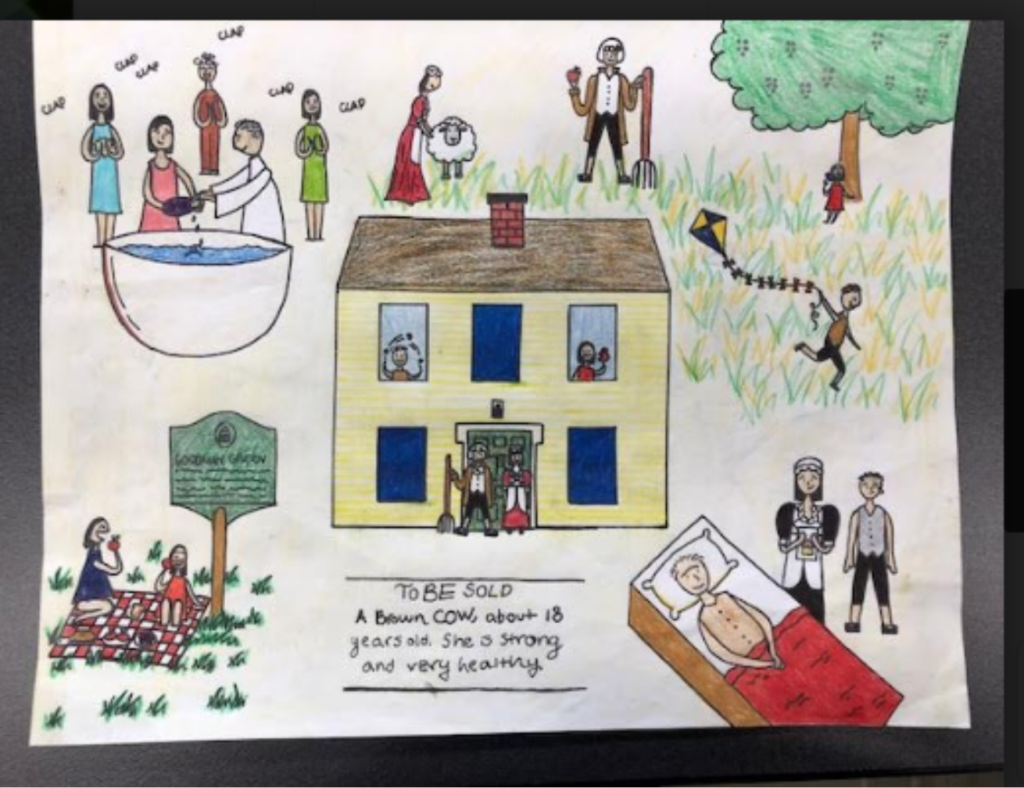Location: 34 North Main Street, West Hartford, Connecticut

What We Know about Ben
A student essay Maya Miller
The research my class conducted on Ben, a man enslaved by Col. John Whiting, has greatly impacted my perspective of the community and the past. Where I once saw a golden house or a lush strip of summer grass, I know see the their twisted pasts and atrocious creation. I strived to make this picture a symbol of that realization, allowing the viewer to peel away the illusion and uncover the reality.
Therefore, this picture has two layers. On top, there is a piece of paper which holds a handful of colored images. Beneath that, there is another piece of paper with a handful of images in black and white. I colored the top layer because those images show what is usually seen, several bright pictures whose pleasant veneers are emphasized by the warm colors, while the bottom is what really happened, in several somber, monochromatic pictures.
The image in the top left corner of the front page depicts a baby being baptized. Notice that the baby is white, and the baptism is portrayed as a celebration. This is because most white men and women were baptized as babies at the time, to be cleaned of their sin early so that they could lead a joyful and sin-free life. However, if you peel back the top sheet and look just below the image, in the top left corner of the bottom paper, there is Ben being baptized. Ben was baptized in 1759, according to the church records. He owned the covenant in the same year, which presumably means that he was much older than just an infant when he was baptized. This is the opposite of the celebrated white baby’s baptism because Ben, being enslaved, wasn’t seen as someone who should be cleaned of their sin early, therefore allowing him to live a sinful life until he was baptized when he was much older. In reality, this is how unfairly the enslaved were baptized.
Beside that image, stretching from the baptism image across the top of the layers to the top right corner, is an image of the Whitings’ farm. On the top layer, Col. Whiting’s wife, Jerusha Whiting, is contentedly shearing a sheep. Col. Whiting himself is taking a break from raking crops to eat a well-earned apple. One of his daughters is happily devouring mulberries under one of his mulberry trees while watching one of his sons exuberantly fly a kite. The background is a warm yellow like the light of the sun, making this scene seem ever so enjoyable.
